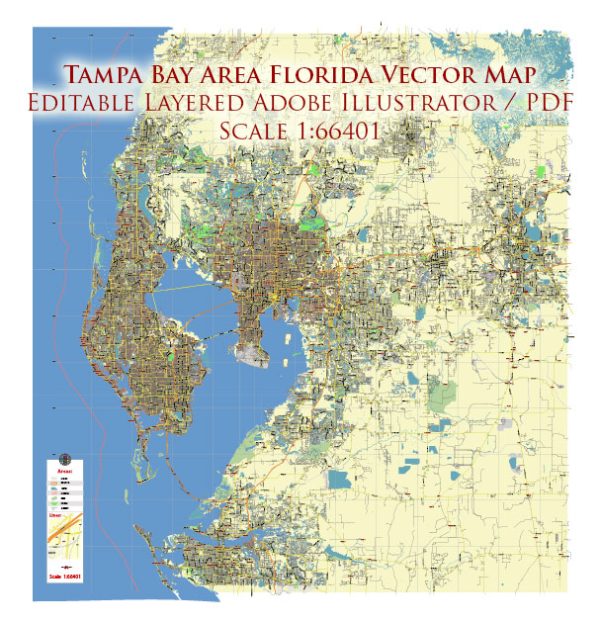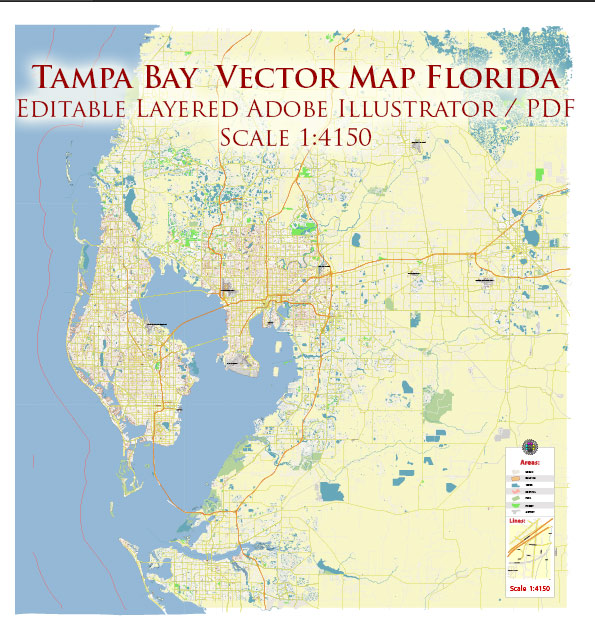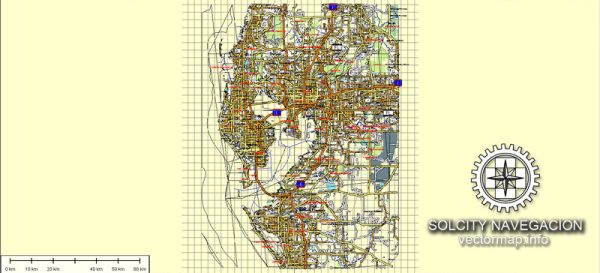Tampa Bay, located on the west coast of Florida in the United States, is a diverse and ecologically rich region known for its unique blend of coastal ecosystems. Here’s an ecological description of the Tampa Bay area:
- Coastal Ecosystems: Tampa Bay is characterized by a mix of coastal ecosystems, including estuaries, salt marshes, seagrass beds, and barrier islands. These ecosystems provide critical habitats for a wide variety of marine and bird species.
- Estuaries: The bay itself is a large estuary, where freshwater from rivers and streams mixes with saltwater from the Gulf of Mexico. This mixture of freshwater and saltwater creates a unique environment that supports a rich array of marine life, including fish, crabs, and oysters.
- Seagrass Beds: Tampa Bay is home to extensive seagrass beds that serve as important nursery areas for various species of fish and other marine organisms. Seagrass meadows provide shelter and food for numerous marine species and help maintain water quality by stabilizing sediments and absorbing nutrients.
- Mangrove Forests: The Tampa Bay area features extensive mangrove forests, which are vital for protecting coastlines from erosion, providing habitat for a variety of wildlife, and serving as nurseries for many fish species.
- Bird Sanctuaries: The bay and surrounding areas are important stopover points for migratory birds and provide critical nesting and foraging grounds for various avian species, including wading birds, raptors, and shorebirds.
- Barrier Islands: The coastal region is dotted with barrier islands, such as the famous Clearwater Beach and St. Pete Beach. These islands play a crucial role in protecting the mainland from storm surges and erosion. They are also home to various plant and animal species adapted to the coastal environment.
- Wetlands: Tampa Bay is surrounded by wetlands that help filter and purify water before it flows into the bay. These wetlands support a range of wildlife and contribute to the overall health of the bay’s ecosystem.
- Marine Life: The bay and Gulf of Mexico are teeming with marine life, including various species of fish, dolphins, manatees, and sea turtles. The bay is known for its recreational fishing, and its waters support both commercial and recreational fisheries.
- Human Impact: Like many coastal areas, Tampa Bay faces ecological challenges, including habitat destruction, pollution, and sea-level rise. Conservation efforts are underway to protect and restore these vital ecosystems.
- Recreational Opportunities: Tampa Bay’s diverse ecology provides a wealth of recreational opportunities, such as boating, fishing, birdwatching, and wildlife photography, making it a popular destination for outdoor enthusiasts and nature lovers.
Efforts to preserve and restore the ecological health of Tampa Bay are ongoing through initiatives such as habitat restoration, water quality improvement, and conservation education, with the aim of maintaining the area’s unique biodiversity and natural beauty.




 Author: Kirill Shrayber, Ph.D.
Author: Kirill Shrayber, Ph.D.